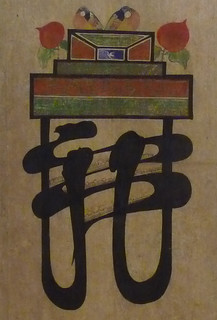 Korea in 1700 was a fairly typical Early Modern East Asian society: educated elites, growing economy and literacy, increasing contacts with other societies; Buddhist and Confucian beliefs, hereditary aristocracies, conservative bureaucratic governance, agricultural tax base. Over the course of the 18th and 19th centuries, the government struggled with factionalism and reform, with an increasingly mercantile economy and with a changing global environment. Though the Korean government rejected Christianity and resisted modern diplomatic ties, late 19th century imperialism forced new ideas and new issues into the forefront. Japan, in particular, involved itself in Korean affairs, first as a trading and reformist presence, then competing with China and Russia for influence in Korea, ultimately forcing Korea into the Japanese empire for decades. After the defeat of Japan in 1945, Korea became a site of tension again, this time between the Cold War superpowers. Those tensions erupted into war, ultimately dividing the Korean people and peninsula into its present political configuration. North Korea has developed a resource-poor Stalinist state headed by a family dynasty; South Korea, after decades of autocratic leadership, has a dynamic participatory democracy and a sophisticated economy and modern culture.
Korea in 1700 was a fairly typical Early Modern East Asian society: educated elites, growing economy and literacy, increasing contacts with other societies; Buddhist and Confucian beliefs, hereditary aristocracies, conservative bureaucratic governance, agricultural tax base. Over the course of the 18th and 19th centuries, the government struggled with factionalism and reform, with an increasingly mercantile economy and with a changing global environment. Though the Korean government rejected Christianity and resisted modern diplomatic ties, late 19th century imperialism forced new ideas and new issues into the forefront. Japan, in particular, involved itself in Korean affairs, first as a trading and reformist presence, then competing with China and Russia for influence in Korea, ultimately forcing Korea into the Japanese empire for decades. After the defeat of Japan in 1945, Korea became a site of tension again, this time between the Cold War superpowers. Those tensions erupted into war, ultimately dividing the Korean people and peninsula into its present political configuration. North Korea has developed a resource-poor Stalinist state headed by a family dynasty; South Korea, after decades of autocratic leadership, has a dynamic participatory democracy and a sophisticated economy and modern culture.
The issues raised by Korea’s history are diverse and challenging, and the role of Korea on the world stage is not likely to diminish anytime soon. Textbook readings and lectures will be heavily supplemented by primary sources — literature, autobiography, Constitutions, oral histories – and secondary scholarship. Class discussion will be central to the course. The writing assignments will allow students to explore their specific interests and the exam will cover the readings and lecture material.
Textbooks
- A History of Korea: An Episodic Narrative, by Kyung Moon Hwang, Palgrave Macmillan, 2010. ISBN 978-0-230-20546-8.
- Korea Old and New: A History, by Eckert, Lee, Lew, Robinson and Wagner. Harvard Korea Institute, 1991. ISBN 0962771309 or 978-0962771309
- Sources of Korean Tradition, Vol. 2: From the Sixteenth to the Twentieth Centuries, edited by Choe, Lee, de Bary. Columbia University Press, 2000. ISBN 0231120311 or 978-0231120319
- Japanese Assimilation Policies in Colonial Korea, 1910-1945, by Mark E. Caprio, University of Washington Press, 2009. ISBN 978-0-295-98901-3
- Bipolar orders: the two Koreas since 1989 By Hyung Gu Lynn. Zed Books, 2007. ISBN 1842777432 or 9781842777435
All of the above books are required reading for the course. They will be available in the PSU Bookstore, but students are welcome to purchase or borrow them from any other source, and in any format. (Though I don’t recommend audiobooks, unless you need them specifically.)
